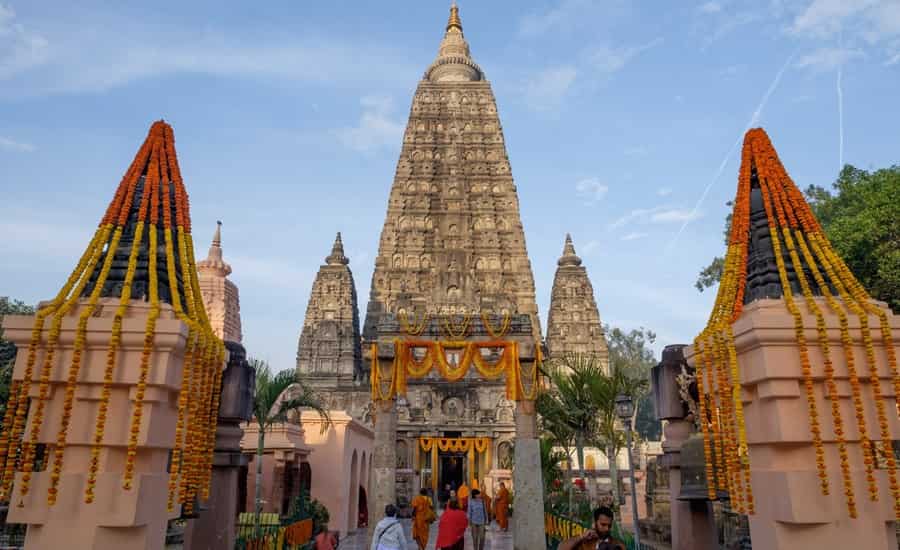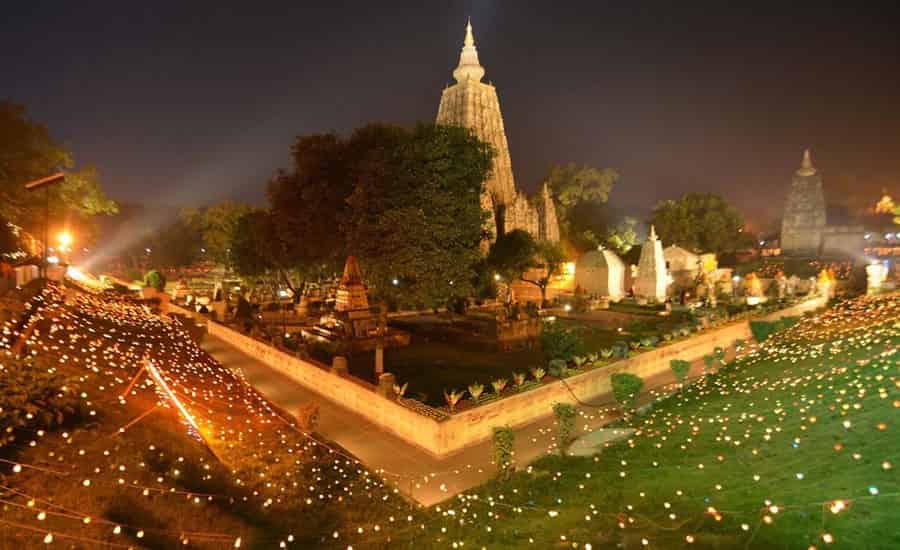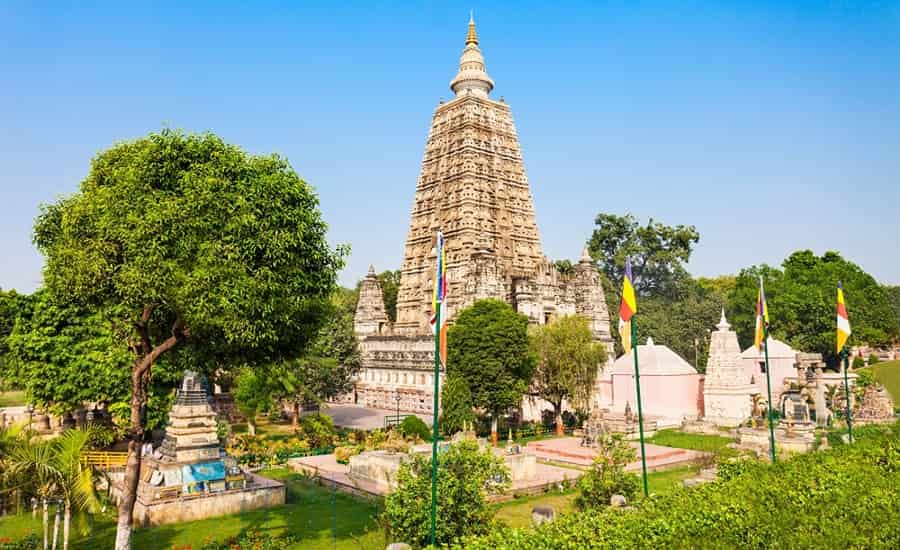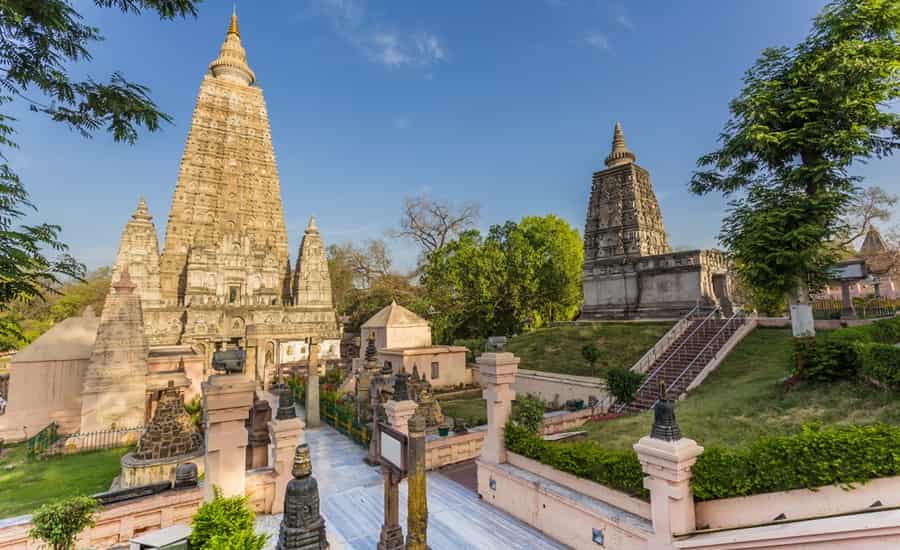The Mahabodhi Temple, located in Bodh Gaya, Bihar, India, is one of the most significant and sacred sites in Buddhism. It stands at the spot where Siddhartha Gautama, the Buddha, is said to have attained enlightenment under the Bodhi tree.…
Mahabodhi Temple
- Location: Bodh Gaya, Bihar, India
- Significance: UNESCO World Heritage Site; considered one of the holiest sites in Buddhism
- Deity: Lord Buddha
- Timings: 5 AM to 9 PM
- Entry Fee: No entry fee
- Time Required: 1-2 hours
- Historical Importance: Marks the spot where Siddhartha Gautama, the Buddha, attained enlightenment under the Bodhi tree around 2,500 years ago
- Architecture: Built in the architectural style of the Indian Gupta dynasty, displaying a blend of Indian and Greco-Buddhist influences
- Main Structure: Mahabodhi Temple, a large pyramidal structure with a central spire rising to a height of 55 meters
- Bodhi Tree: Descendant of the original tree under which Buddha meditated; a sacred symbol for Buddhists
- Vajrasana (Diamond Throne): A stone platform believed to be the spot where Buddha sat during his enlightenment
- Carvings and Sculptures: Elaborate carvings depicting scenes from Buddha’s life and Jataka tales adorn the temple walls
- Great Buddha Statue: A colossal gilded Buddha statue inside the temple, representing Buddha in a seated meditative posture
- Pilgrimage Site: Attracts millions of pilgrims and tourists from around the world, fostering a serene and spiritual atmosphere
- Festivals: Celebrates various Buddhist festivals, with the most significant being Buddha Purnima
- Global Recognition: A symbol of peace and tolerance, visited by people of various faiths and backgrounds
- Restoration: The temple underwent major restoration work to preserve its historical and cultural significance.
The Mahabodhi Temple, located in Bodh Gaya, India, stands as a UNESCO World Heritage Site and holds immense significance in Buddhism. The temple marks the spot where Siddhartha Gautama, the Buddha, is said to have attained enlightenment under the Bodhi tree. Constructed in the 3rd century BCE by Emperor Ashoka, the temple has undergone several renovations and expansions over the centuries. The current structure, a fine example of Indian brickwork, dates back to the Gupta period in the 5th to 6th centuries CE.
The Mahabodhi Temple complex is not only a place of worship but also an architectural marvel. Its main sanctum houses a massive gilded image of the seated Buddha in the “touching the earth” mudra, depicting the moment of his enlightenment. The temple’s surroundings are adorned with numerous smaller stupas, shrines, and ancient Vajrasana, the diamond throne, believed to be the very spot where the Buddha sat in meditation. Pilgrims and visitors from around the world come to Mahabodhi Temple to experience the serenity of the place and pay homage to the historical and spiritual significance it holds.
Beyond its religious and historical importance, the Mahabodhi Temple serves as a symbol of tolerance and cultural exchange. Buddhists from various traditions, as well as people of other faiths, visit this sacred site, fostering a sense of unity and understanding. The temple and its tranquil surroundings continue to be a source of inspiration and reflection, drawing seekers of spiritual wisdom and cultural enthusiasts alike.
Mahabodhi Temple Timings and Rituals
The Mahabodhi Temple, located in Bodh Gaya, Bihar, India, is one of the most revered and significant pilgrimage sites for Buddhists around the world. This ancient temple is closely associated with the enlightenment of Lord Buddha and stands as a…
Best Time to Visit Mahabodhi Temple
Mahabodhi Temple, located in Bodh Gaya, Bihar, India, is a UNESCO World Heritage Site and one of the most significant pilgrimage sites for Buddhists. It is the place where Siddhartha Gautama, the Buddha, is said to have attained enlightenment under…
How to Reach Mahabodhi Temple
Mahabodhi Temple, located in Bodh Gaya, Bihar, India, is a UNESCO World Heritage Site and a sacred pilgrimage destination for Buddhists around the world. This guide provides detailed information on how to reach Mahabodhi Temple using various modes of transportation,…
A Comprehensive Guide to Visiting the Mahabodhi Temple
The Mahabodhi Temple, located in Bodh Gaya, India, stands as a symbol of enlightenment and is one of the most revered Buddhist pilgrimage sites globally. Steeped in history and spirituality, this UNESCO World Heritage site attracts millions of visitors each…






 Call
Call WhatsApp
WhatsApp Enquiry
Enquiry